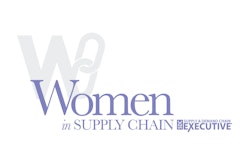
Healthcare is starving for individuals who can handle the day and age of “every minute counts to fight for the quality and cost” mission of the healthcare system. Every dollar saved is a dollar toward more jobs, not fewer jobs. Of course, this is the mentality that will always be needed. But, what is the necessary skillset to be the vice president of a hospital’s supply chain? It’s not the traditional skillset, but rather a mix of skillsets that is the secret recipe for success in today’s health system.
The traditional supply chain leader started as a receiver or distribution tech, moved to manager of distribution and or purchasing, was eventually promoted to oversee more operational areas, and now works with hospital executives. These individuals know how the technology works, how to source products quickly when supplies are depleted and how to staff multiple shifts and communicate with department leaders. But, in new times of lower profits and fewer staff, leaders need to be nimble on their feet, quicker to solve problems and focused on data to drive operations and project costs.
The need for skillsets outside the traditional leader is relevant. The healthcare supply chain for the operating room typically makes up more than 90% of critical problems in the hospital, whether controlling perpetual inventory systems, updating preference cards or submitting charge codes to match implant contracts correctly. The “or” is where skillsets are most critical.
Knowing the products, speaking to and recognizing clinical teams and understanding the sterility process is crucial to resolving issues and partnering with staff to do so. Also, because hospitals need to embrace efficiencies under rising pressures on healthcare profits, skills in data analysis will become a pre-requisite for many lower- to mid-level jobs. These skills will allow staff to be trained faster and grow into leadership roles. Considering lower-level consultants at big firms for leadership roles in supply chain is a fantastic way to grease your pipeline of effective leaders for the future.
Good leaders identify talented staff who can take on projects to bring great growth to the company. Your people are your best asset. Use them to teach you what you don’t know so you can realign the overall operation to work properly. Avoid alienating anyone; with good coaching and guidance, all staff can contribute to the operation. Apply their technical, communication or attention-to-detail skills to leading a project. Find out what they are good at and put them in positions where they can make a difference. And, once they are in those roles, they will be grateful that you listened and valued their opinion.
Get your leadership continuity plan together. Good leadership means the organization runs smoothly long after you leave because you had a vision for the future. It may take years to groom the next generation of leaders to prepare them to take the helm. It’s better to begin now by giving those people the projects and leadership experience they need, so they are ready, willing and able when the time comes for advancement.



















